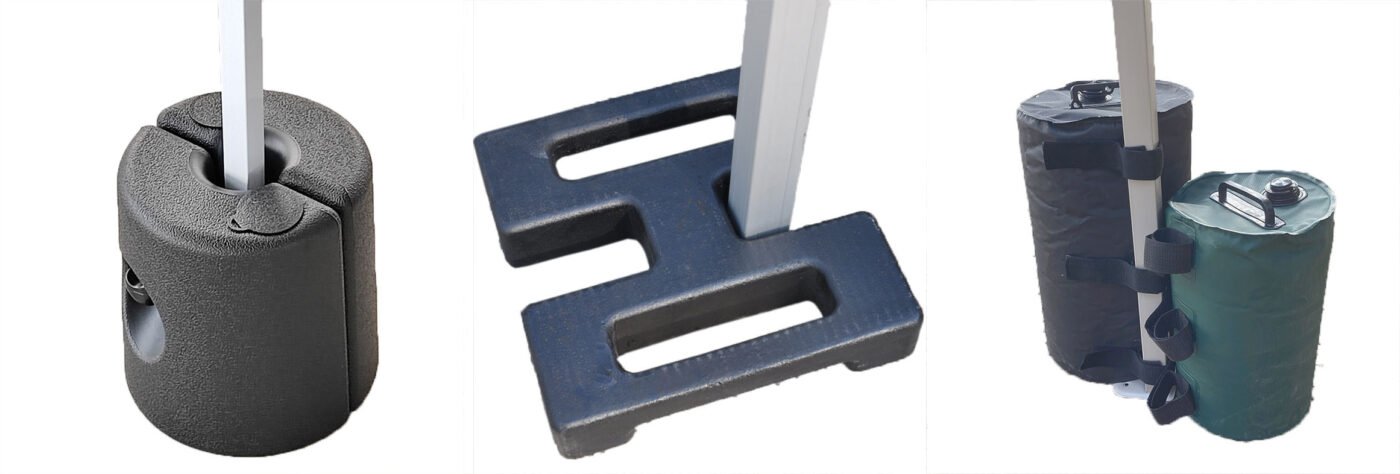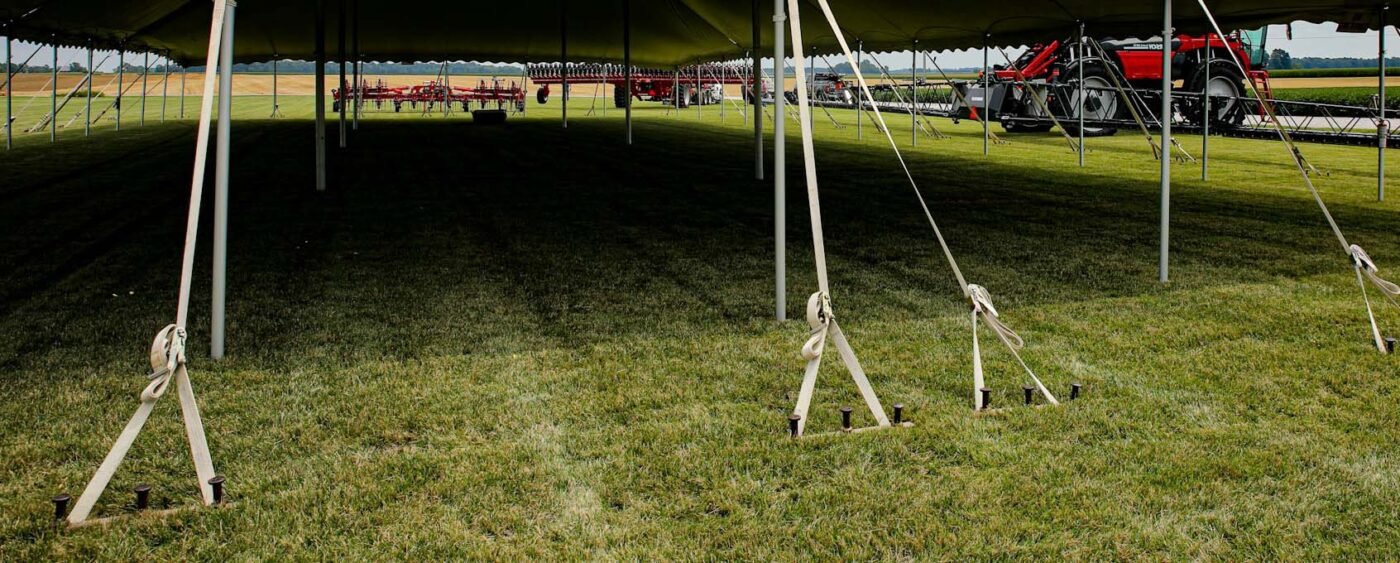Knowledge
Best Methods for Securing a Canopy Tent on Concrete: A Comprehensive Guide
Setting up a canopy tent on concrete surfaces presents a unique challenge compared to softer ground like grass or soil.
Without the ability to drive stakes into the ground, securing your canopy requires thoughtful solutions to ensure it remains stable, even in unpredictable weather conditions.
Whether you’re hosting an outdoor event, setting up a market stall, or simply seeking shade at a trade show, securing your canopy is essential to avoid accidents or damage.
In this guide, we’ll explore the best methods for securing a canopy tent on concrete, including both weighted and fixed anchoring techniques, as well as the advantages and disadvantages of each approach. Let’s begin by diving into the specific anchoring methods.
Anchoring Methods
1. Weighted Anchoring
Weighted anchoring methods rely on adding substantial weight to each leg of the canopy to prevent it from being lifted or moved by wind. This option is ideal for those who need portability and flexibility, as it doesn’t involve altering the concrete surface.

- Sandbags: A popular and cost-effective choice, sandbags can be filled with sand or gravel and attached to the legs of the canopy. Each leg should ideally have between 24 and 50 pounds of weight, depending on the wind conditions.
Sandbags are easy to transport when empty and can be filled on-site, making them a practical option for temporary setups. - Cinder Blocks or Bricks: Cinder blocks or bricks are another durable option that can be placed at each corner of the canopy. Their solid, hefty structure provides substantial stability and weight. However, they can be bulky and may not offer the most aesthetic solution, especially for formal events.
- Water Containers: A more versatile method is to use 5-gallon buckets filled with water or sand. These can be secured to the canopy frame using ropes or straps. When empty, the buckets are easy to transport and store, making them a convenient solution.
The advantage of this method is the flexibility to adjust the weight as needed, though you’ll need access to a water source to fill the buckets on-site.
2. Fixed Anchoring
For a more permanent and secure solution, you can opt to drill into the concrete surface to install anchors or bolts.
This method ensures that the canopy is firmly attached to the ground, providing the highest level of stability, especially for long-term setups or in areas with high winds.

- Drilling into Concrete: This technique involves drilling holes into the concrete and installing specialized anchors or bolts. Once installed, the canopy can be secured using cables or straps.
While this method is highly secure, it’s a more permanent solution that requires special tools and may not be suitable for temporary setups. Additionally, drilling into concrete can damage the surface, which may be undesirable in certain locations.
3. Hybrid Method
In some cases, combining both weighted and fixed anchoring methods provides an extra layer of stability. For example, you can use sandbags along with concrete anchors for maximum security.
This combination offers a level of redundancy—if one anchoring method fails due to wind or movement, the other remains in place to provide support.
Additional Techniques
There are a few additional techniques that can enhance the stability of your canopy, especially in windy conditions:

- Ratchet Straps: Ratchet straps can be used to secure the canopy to heavy objects or nearby structures. By tightening the straps, you can reduce the risk of the canopy shifting or moving due to wind. This method is particularly effective when combined with weights or anchors.
- DIY Weights: If you prefer a low-cost, DIY approach, you can create your own weights using everyday items like buckets filled with sand or gravel, or even exercise weights. These can be attached to the legs of the canopy using ropes or straps.

Placement and Distribution
No matter which anchoring method you choose, the placement and distribution of the weights are critical for ensuring maximum stability. Here are a few tips:
- Strategic Weight Distribution: Make sure that weights are placed at each leg of the canopy. If possible, place additional weights in the center of the structure to ensure that the load is evenly distributed, which will prevent uneven pressure that could destabilize the canopy.
- Use of Tent Weights: Commercially available tent weights are specifically designed to fit around the legs of a canopy. These weights are often stackable, allowing you to add more weight as needed.
They are typically made from durable materials and are easy to attach, making them a convenient and reliable option.
Pros and Cons of Different Anchoring Methods
| Anchoring Method | Pros | Cons |
|---|---|---|
| Sandbags | – Affordable and easy to transport when empty – Flexible weight adjustment | – Requires filling on-site – May not offer the most aesthetic appearance |
| Cinder Blocks or Bricks | – Provides solid, stable weight – Widely available | – Bulky and difficult to transport – Less visually appealing |
| Water Containers | – Easy to transport when empty – Can be filled with water or sand | – Requires access to water – Buckets may not blend in aesthetically |
| Drilling into Concrete | – Most secure method for long-term setups – High resistance to wind | – Permanent solution that damages the surface – Requires special tools |
| Ratchet Straps | – Enhances stability when used with weights – Adjustable and versatile | – Requires strong, heavy objects or structures to attach to |
| Hybrid (Weighted + Fixed) | – Provides redundant security – Combines the strengths of both methods | – More complex setup – Can be overkill for temporary installations |
| DIY Weights | – Cost-effective solution – Can use available materials like buckets or exercise weights | – May not offer a professional appearance – Weights may shift in heavy winds |
Conclusion
Securing a canopy tent on concrete is all about choosing the right anchoring method for your specific needs.
Weighted anchoring is ideal for temporary setups and provides the flexibility of being portable, while fixed anchoring offers more permanence and is best for long-term use or in high-wind areas. Combining both methods can provide extra peace of mind.
By strategically placing weights and securing your canopy using straps or anchors, you can ensure your setup remains safe, stable, and ready for any event or occasion, no matter the surface.
